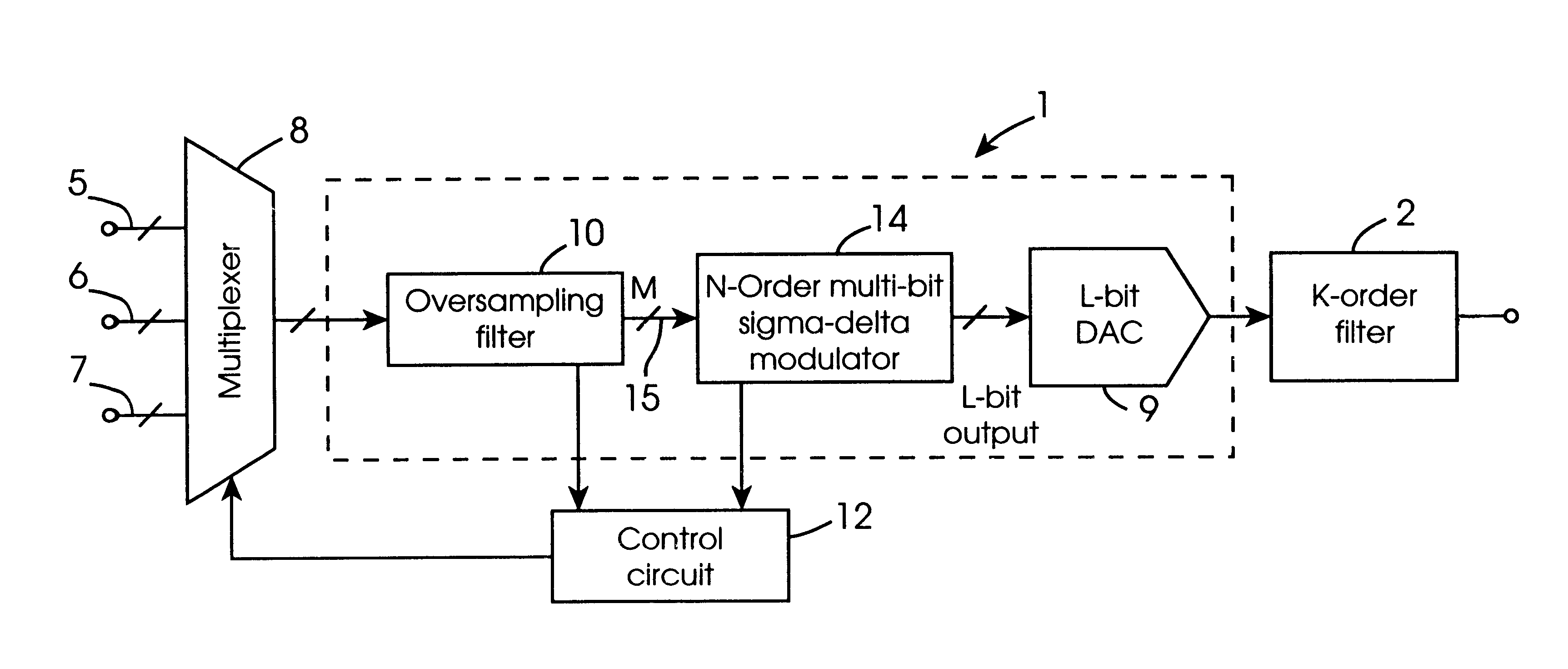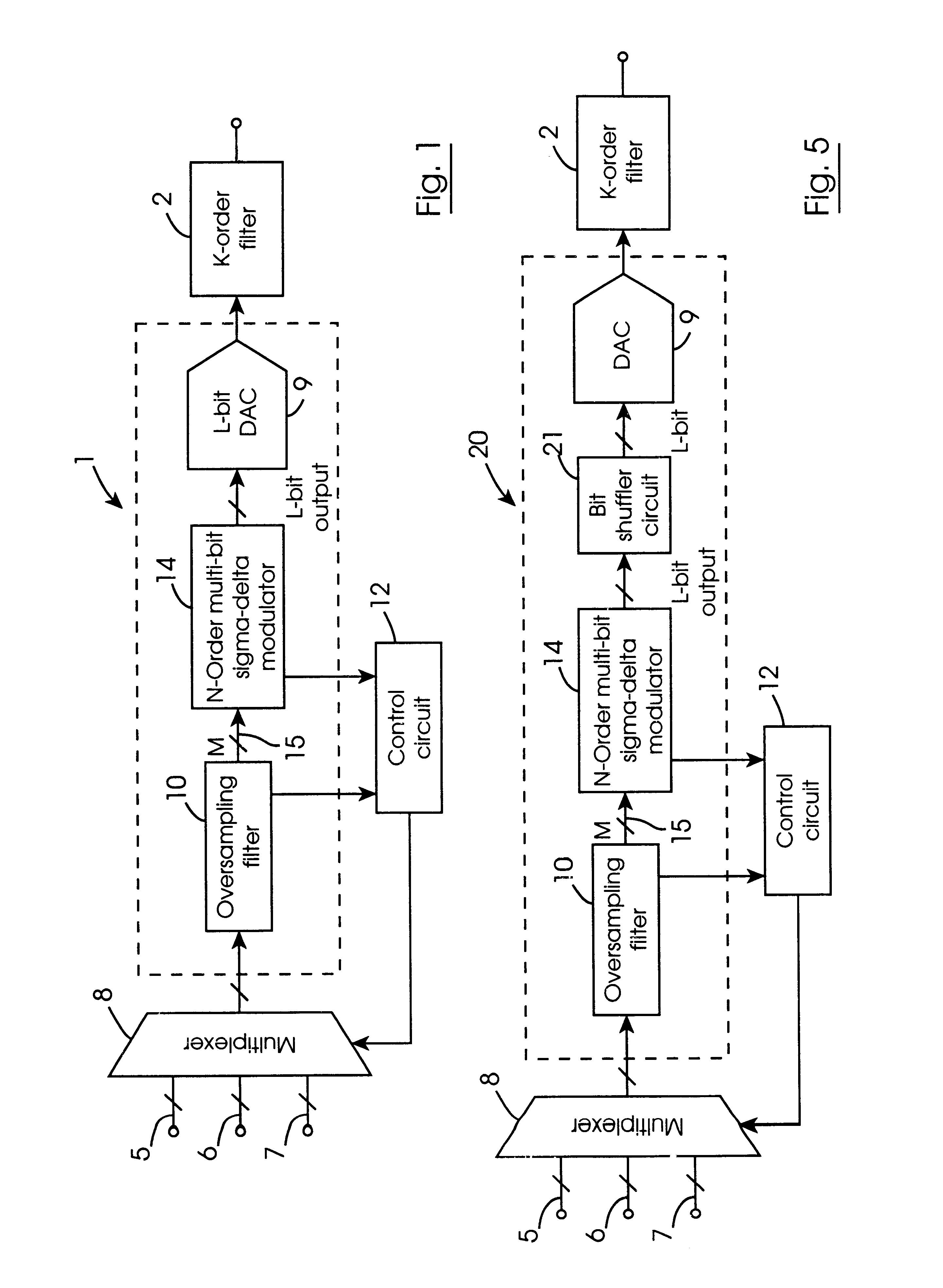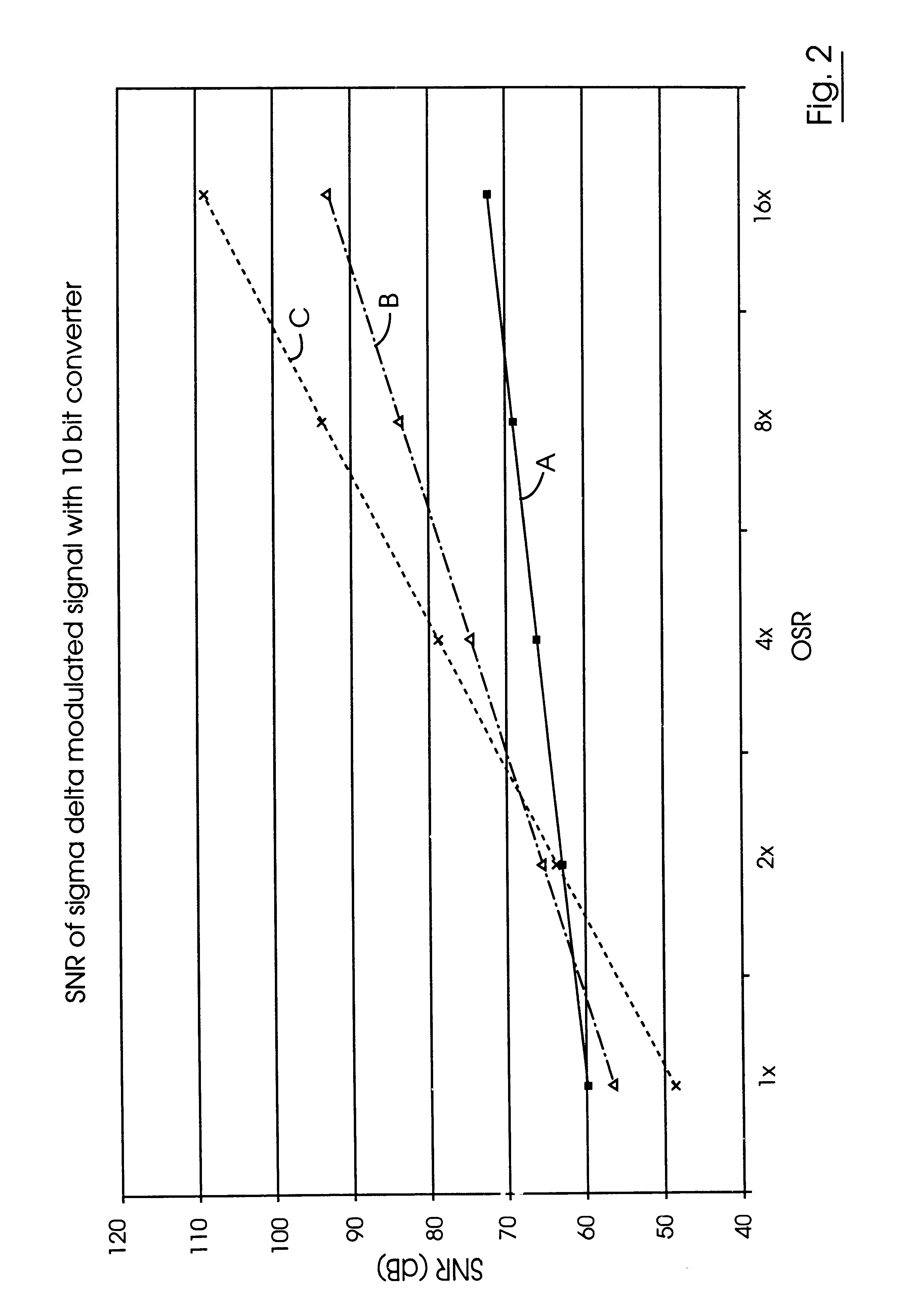Method for converting a video signal from one of an analogue and digital form to the other of the analogue and digital form with enhanced signal to noise ratio
a video signal and analogue and digital technology, applied in the field of video signal conversion, can solve the problems of relatively high complexity and cost of analogue reconstruction filters of the appropriate order, inability and unable to achieve the effect of reducing the complexity and cost of such reconstruction filters
- Summary
- Abstract
- Description
- Claims
- Application Information
AI Technical Summary
Benefits of technology
Problems solved by technology
Method used
Image
Examples
first embodiment
the method according to the invention for converting digital video data signals to analogue signals will be described with reference to FIGS. 1 and 2. In the method according to the invention multi-bit digital video data signals in three formats, namely, standard definition, progressive scan and high definition formats are converted to analogue form in a digital to analogue converting circuit indicated generally by the reference numeral 1 in FIG. 1. The converted video signals in analogue form are passed through a K-order analogue reconstruction filter 2. In this embodiment of the invention video signals in the three formats are converted in the same converting circuit 1 and are filtered in the same reconstruction filter 2. However, since the video signals in each of the three formats can have up to three channels, a separate digital to analogue converting circuit 1 and a corresponding separate analogue reconstruction filter 2 is provided for each channel. However the same analogue ...
PUM
 Login to View More
Login to View More Abstract
Description
Claims
Application Information
 Login to View More
Login to View More - R&D
- Intellectual Property
- Life Sciences
- Materials
- Tech Scout
- Unparalleled Data Quality
- Higher Quality Content
- 60% Fewer Hallucinations
Browse by: Latest US Patents, China's latest patents, Technical Efficacy Thesaurus, Application Domain, Technology Topic, Popular Technical Reports.
© 2025 PatSnap. All rights reserved.Legal|Privacy policy|Modern Slavery Act Transparency Statement|Sitemap|About US| Contact US: help@patsnap.com



